Prakrut, an organic food and produce festival organised by the Saurashtra Sajeev Kheti Abhiyaan, took us to Rajkot in December 2015. The gathering had some of the best regional and native foods on display, right from the sugarcane juice from organic sugarcane, juice of prickly pears to the Shrikhand made from milk produced by the Gir cow- the best I have had in my entire life, we brought back some wonderful food memories, we shall be sharing with you lot of native recipes we brought back from the fair.
A food-stall that caught our fascination was one selling Aloe Vera flower shaak/dry vegetable along with Bajri Rotla.. we have had eaten and used Aloe Vera leaves before but, never ever heard of its flower being eaten. An interaction with the group selling this delicacy gave us some insights. Aloe Vera grows in abundance in the hot and arid parts of Saurashtra. Its medicinal value has increased its demand triggering its cultivation in the region. The flower of this plat is orchid like and bright orange coloured, infact it is quite an ornamental looking flower. One would find it difficult to believe that such beautiful looking flower is intact edible!!! Apart from eaten as Shaak it is also used in Kadhi and that is what we tried making, after acquiring the basic instructions of how the flowers are to be cooked. The group was generous enough to give us enough stock of Aloe Vera flowers to bring back home and create this beautiful looking Kadhi.
Kadhi is the quintessential Indian yoghurt and Gram flour soup with each state of this diverse land having its own version to this dish.
The Gujarati Kadhi is quite an evolved dish, as the Gujaratis have mastered the art of combining vegetables into the Kadhi to create one filling dish. Bindaa Ni Kadhi, Ringan Ni Kadhi, Methi Ni Kadhi, Tuver Na Lilva Ni Kadhi, Galka Ni Kadhi are quite popular Kadhi varieties cooked in Gujarati kitchens. The Kadhi in Gujarat has many regional avataars as well. Kadhi made in urban households differs from its rural counterpart. In most rural areas Kadhi is made from buttermilk and not Chaash (yoghurt+water). The rural Kadhi is tart and rich because of the butter content in it. Rotla+Ringan Ni Kadhi (aubergine Kadhi) normally sums up as lunch in these regions. The versatility of our wholesome Kadhi is so huge that it can be found on wedding menus and makes its place on hospital menus as well.
We are to dedicate an entire section to the fabulous Kadhis of Gujarat. So more on Kadhi later, will come back to our Aloe Vera Kadhi, assuming that all of us are aware of the medical properties of Aloe Vera we won’t dive into that aspect here…… The picture below is of the Aelo Vera flowers we were given at Prakrut. December also is the month the flowers bloom on Aloe Vera, I could see lot of flower laden Aloe Vera plants in the neighbouring gardens. If you have it right now you may want to try making this nourishing Aloe Vera Kadhi.
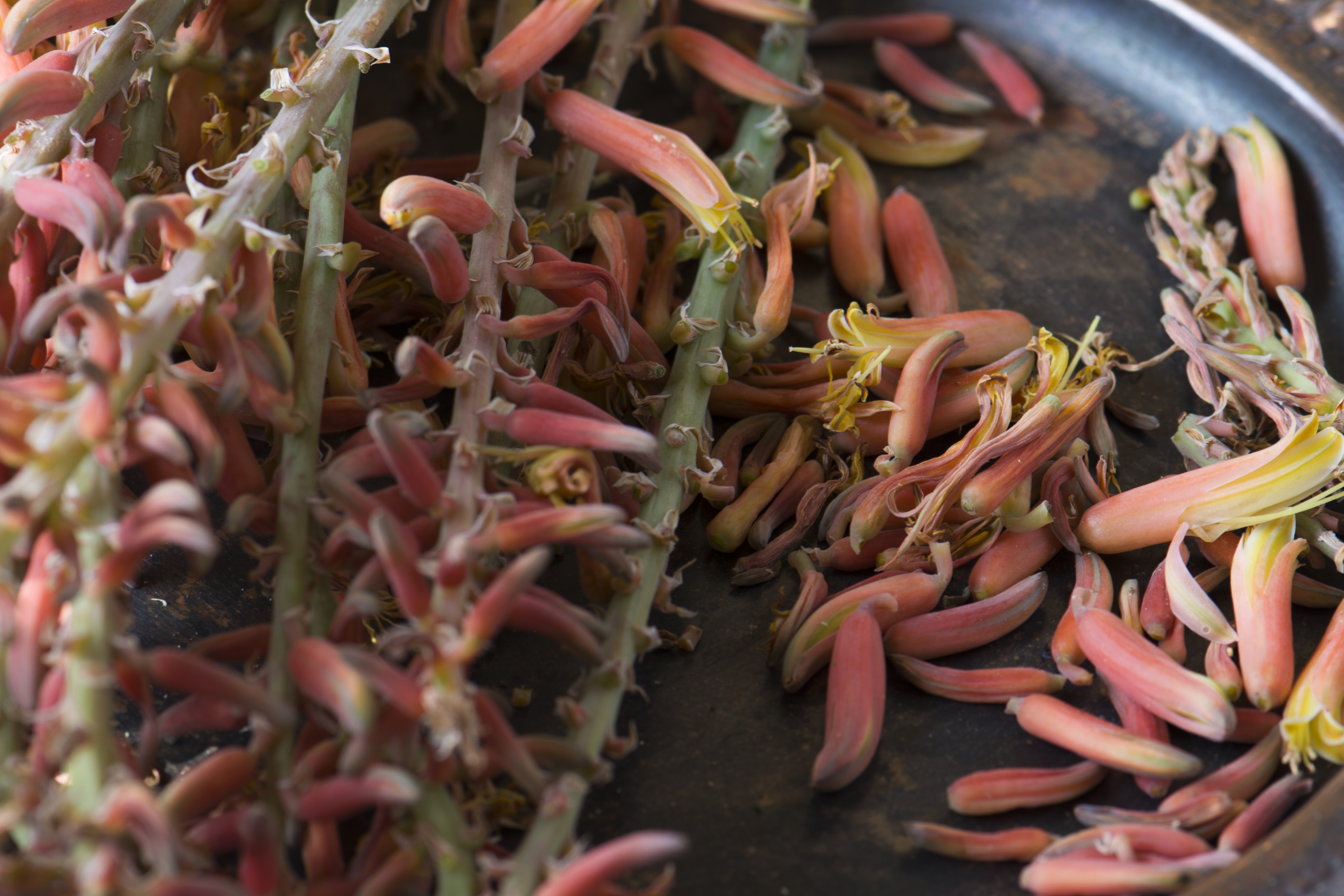
Gujarati Kadhi with Aloe Vera flowers
Serves 2 to 3 people
Ingredients
- 2-3 stems of Aloe Vera flowers
- 2 cups yoghurt
- 3 tablespoons besan/Gram flour
- 1-2 teaspoon sugar (depending on taste and sourness of the yoghurt)
- 3 teaspoon ginger+green chilli paste
- 1 teaspoon oil ( to temper Aloe Vera flowers)
- 2 teaspoon ghee (to temper Kadhi)
- 1 teaspoon jeera/cumin seeds
- 1 teaspoon methi/fenugreek seeds
- 1/2 teaspoon asafoetida
- 1/4 teaspoon turmeric, fresh to powder (optional)
- 1 spring curry leaves
- 3 cloves
- 1 inch cinnamon stick
- 2-3 whole red chillies
- salt to taste
- coriander springs to garnish
Method
- Note that the entire dish has to be made on a medium to low heat.
- Pluck/separate the flowers of Aloe Vera flowers from its stalk. Give a rough to the flowers and the delicate part of the stalk
- In a deep vessel bring 3 cups of water to boil. In the boiling water add the chopped flowers and stalk. Boil or a minute and drain. Discard the water.
- In a deep pan whisk together yoghurt and gram flour. Whisk vigorously to break flour lumps. Add 2 teacups of water to the yoghurt mix. Add the balance 2 teaspoons ginger-chilli paste, turmeric, salt and sugar. Keep aside.
- In a kadhai heat 1 teaspoon oil and add the boiled flowers, 1 teaspoon ginger chilli paste and salt to taste.
- Let the flowers sweat a bit.
- Add the yoghurt mix to the flower mix, keep the flame low and keep stirring until the mixture thickens. This should take around 10 minutes. Once the Gram flour is cooked the mixture shall thicken and will not scale on the bottom. Until then the mixture should be continuously stirred.
- To prepare the tempering for the Kadhi heat a small kadai, add the ghee, once the ghee heats up in quick succession add the jeera and methi seeds, cloves, cinnamon stick, asafoetida, broken red chillies and spring of curry leaves. Once every thing splutters add it to the Kadhi to the sound of sizzle…
- Cook the Kadhi for a few minutes or until it boils for a 5-7 minutes. Check the balance of salt, sugar and sourness and adjust the taste accordingly. The Gujarati Kadhi is on the sweeter side.
- Transfer the Kadhi to a serving bowl and garnish with coriander.
- Serve with atta or millet roti or rice or khichdi..
From Me to You….
Ghee is essential part of Gujarati Kadhi, we always temper Kadhi with ghee.
Gur/jaggery instead of sugar can be added as sweetener. The Kadhi might change colour if the jaggery is dark coloured.

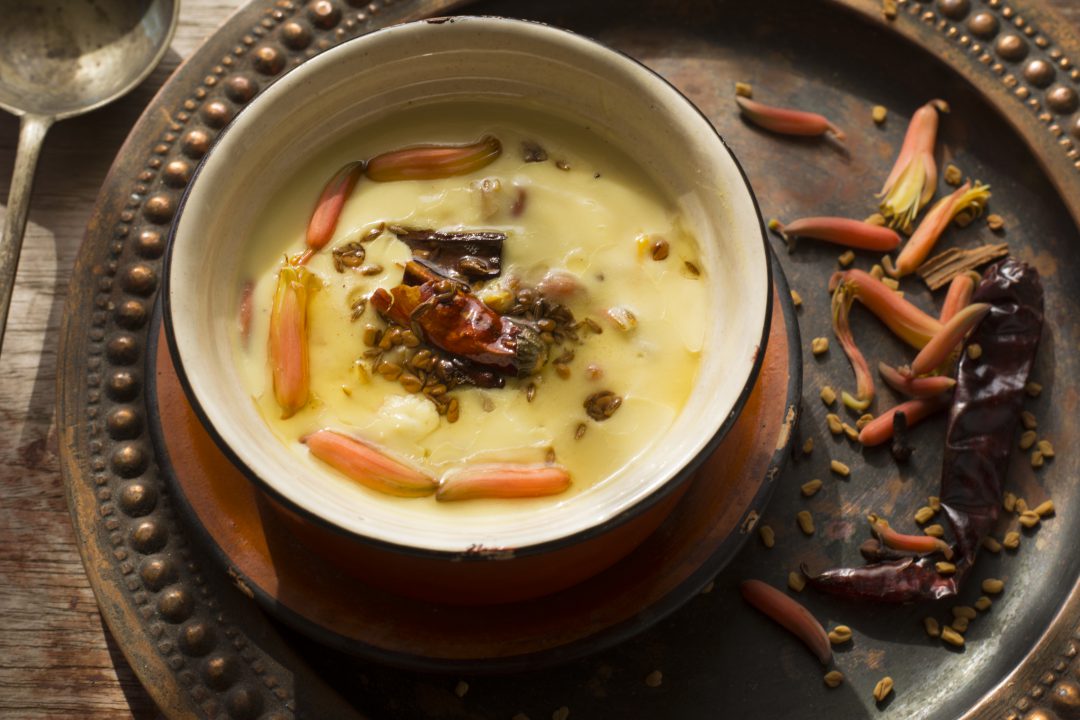
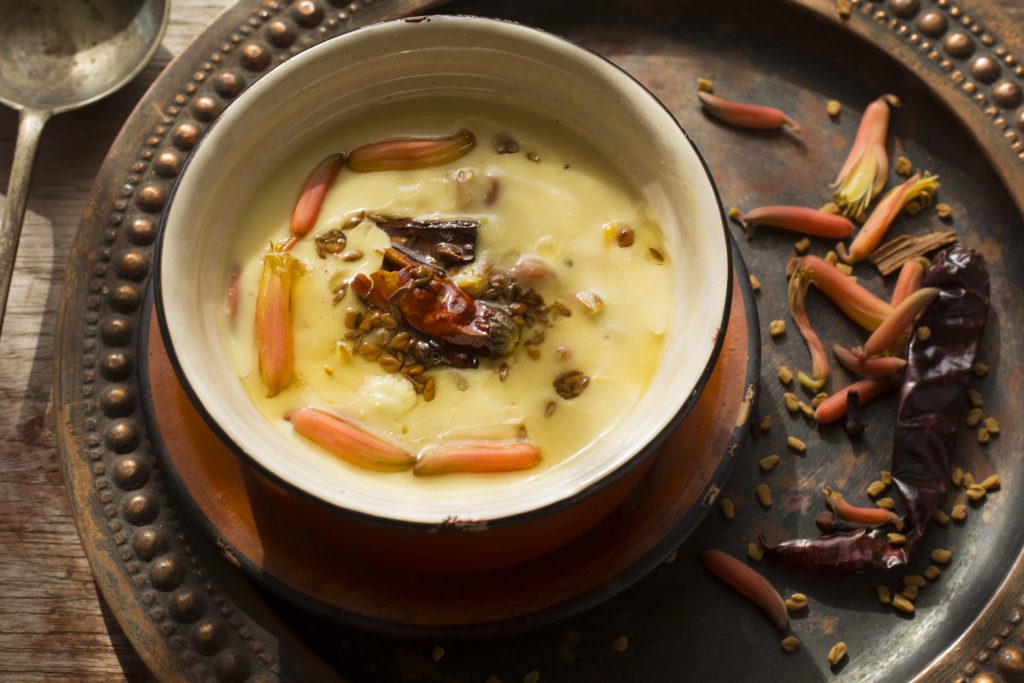

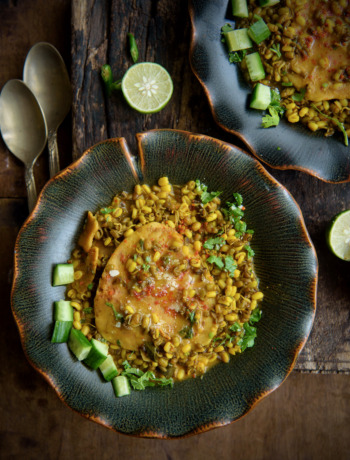
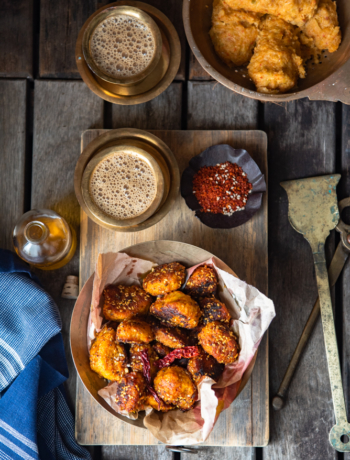
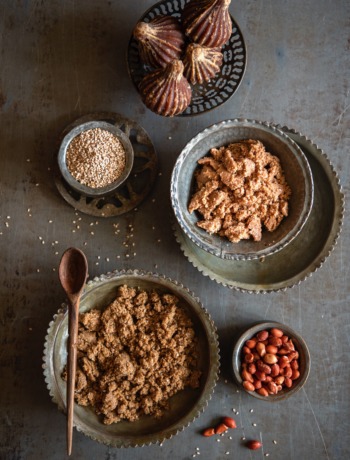
No Comments